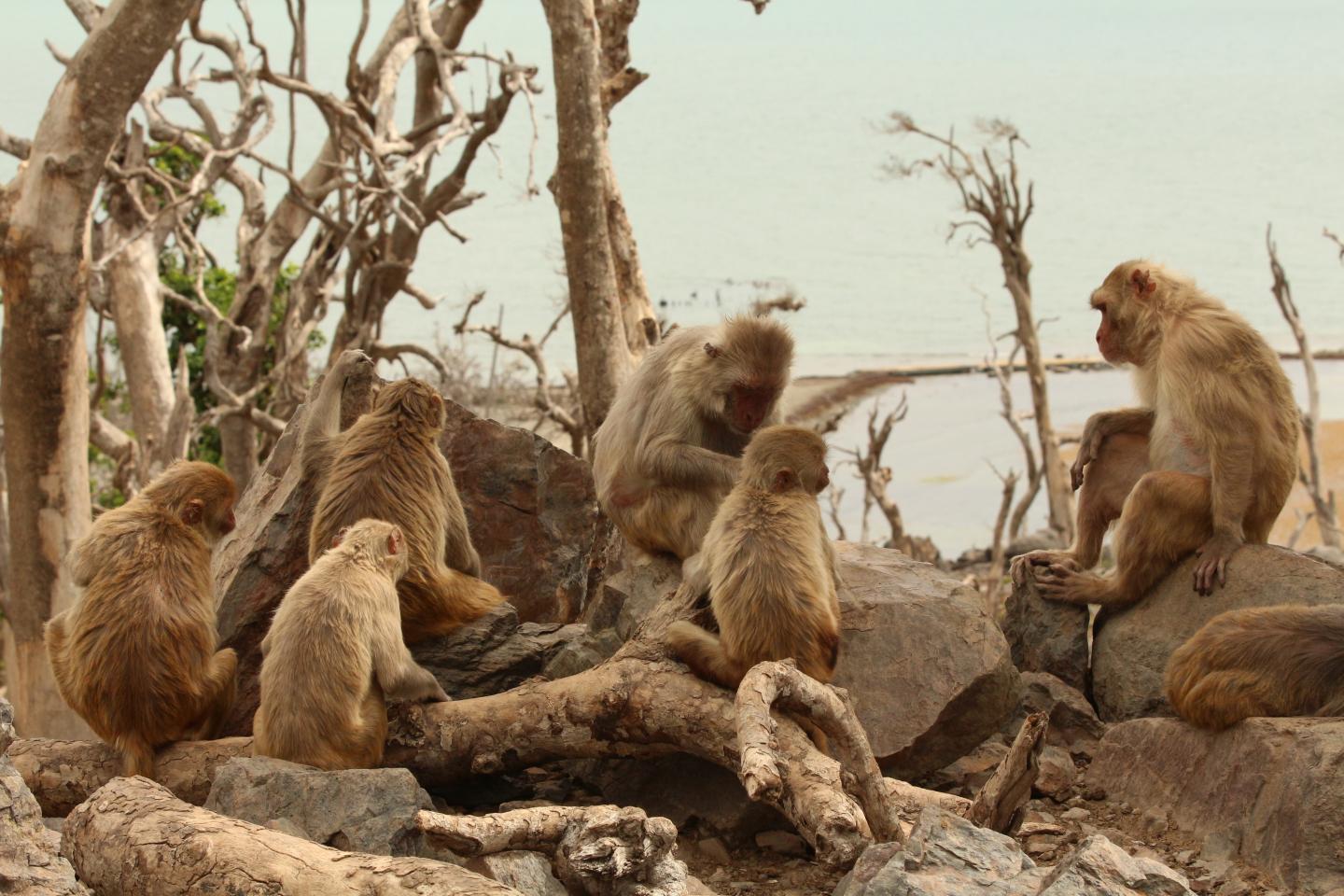Monkeys with more grooming partners have bigger brain regions linked to empathy, study finds
Findings can help understand human behaviour and neurodevelopmental disorders like autism

The number of social connections of an individual monkey can predict the size of its brain areas associated with social decision-making and empathy, according to a new study.
The research, published on Wednesday in the journal Science Advances, found that for macaques with more grooming partners, key nodes in their brain’s mid-superior temporal sulcus (STS) and ventral-dysgranular insula grew larger. These are areas thought to play a part in social decision-making and empathy.
Scientists say the findings can help better understand human behaviour, and also shed light on neurodevelopmental disorders like autism.
“For the first time, we’re able to relate the complexity of social lives of a group of living primates with brain structure,” study lead author and doctoral student Camille Testard from the University of Pennsylvania, said in a statement.
Previous studies have found a link between the variation in the size of the amygdala in people to the number of Facebook friends they have, hinting at the association human social networks have with brain regions.
“But it’s hard to get granular data on human social interactions because we can’t follow people around all day long,” Michael Platt, a co-author of the study, explained.
In the new study on monkeys, scientists could overcome this hurdle.
They studied a group of free-ranging rhesus macaques living on Cayo Santiago, an island off the coast of Puerto Rico, that they have been following for over a decade.
Researchers focused specifically on grooming partners that represent direct and important relationships for the macaques.
Scientists looked at the animals’ broader social networks, representing individuals they interact with indirectly.
As part of the study, researchers also assessed whether the macaques grew or shrunk their social networks after Hurricane Maria hit the island in 2017.
They found that the animals became more social and more accepting of one another, forming new relationships in addition to those they already had.
Researchers conducted a comprehensive study, recording detailed interactions of a social group of 68 adult rhesus macaques on the island and examined five factors.
These include social status, number of grooming partners, physical distance with other monkeys, connectedness to popular monkeys in the network, and what the researchers called “betweenness,” or the ability to act as a bridge between disconnected parts of the social network.
Scientists also collected brain scans for every monkey in the social group, including 35 juvenile and infant macaques.
They found that the more grooming partners individuals had, the larger their mid-STS and ventral-dysgranular insula were.
“It was very interesting to find these regions, as their importance is known for social cognition in humans,” Jérôme Sallet, another co-author of the study, said.
“We also identified the mid-STS region in another study showing that activity in this region is modulated by the predictability of others’ behaviours,” Dr Sallet added.
Researchers say young macaques weren’t born with these differences in brain structure but, rather, these variations arose with development.
“There’s something about the skills it takes to make and maintain a lot of friendships that you get from parents. You’d think it would be written into your brain when you’re born, but it seems more likely to emerge from the patterns and interactions that you have,” Platt explained.
“Perhaps that means that if your mother is social and you’ve got the capacity to be social, your brain can mature in the way that looks like the findings we’ve uncovered. That’s intriguing,” he added.
But researchers add that the modulation can also be strongly driven by the social environments, “maybe more than by our innate predisposition.”
Scientists believe the findings also have implications for human behaviour, and in particular, for understanding neurodevelopmental disorders like autism.
“This is not some lab phenomenon. This is real life, the real world,” Dr Platt said.
“This work provides a baseline for understanding how these animals navigate. It’s really thrilling and gratifying that this work done in the field is synergising work we’ve been doing in the lab for a long time,” he added.
Join our commenting forum
Join thought-provoking conversations, follow other Independent readers and see their replies
Comments
Bookmark popover
Removed from bookmarks